Introduction

Every runner, whether you're lacing up for your very first mile or you're a seasoned marathoner chasing a new personal best, shares a common goal: to run stronger, faster, and injury-free. While training plans, nutrition strategies, and the latest gear all play crucial roles in achieving these goals, there's one fundamental aspect that often gets overlooked but is absolutely pivotal: your running form. Think of it as the foundation upon which all your running success is built. A solid foundation means a stronger, more resilient structure, while cracks in the foundation can lead to instability and, yes, injury. This guide is your friendly companion to understanding and refining your running form, ensuring you're not just logging miles, but logging them efficiently and safely.
Perhaps you've noticed that nagging knee pain that flares up after every run, or maybe you're feeling consistently fatigued even on shorter distances. Or maybe you're simply curious if there's a way to make your running feel easier, more fluid. These are all common reasons runners start to think about their form. It's not about striving for some unattainable ideal of perfect running – because honestly, what even *is* perfect running form? It's more about understanding the principles of efficient movement and finding what works best for *your* body. This guide is designed to demystify running form, break it down into digestible pieces, and offer practical, actionable tips that you can start implementing today. Whether you're a complete beginner or an experienced runner looking for that extra edge, we're here to help you unlock your most efficient and injury-resistant running self. Let's dive in and explore the fundamentals of running form together!
Understanding Running Form

So, what exactly do we mean when we talk about "running form"? In the simplest terms, running form refers to the way your body moves when you run. It's the symphony of movements involving your posture, arm swing, leg stride, and foot landing – all working together (or sometimes against each other!). It's not about mimicking a specific style or trying to look like a professional runner on TV. Instead, effective running form is about optimizing your body's natural mechanics to propel you forward with the least amount of wasted energy and stress.
Why is good form so crucial? Think of your body as a finely tuned machine. When all the parts are working in harmony, the machine runs smoothly and efficiently. But if parts are misaligned or working against each other, things can get clunky, energy is wasted, and stress builds up in the wrong places. In running, inefficient form translates to wasted energy, meaning you get tired faster and have to work harder for the same speed. More importantly, poor form can place undue stress on your joints, muscles, and connective tissues, making you more susceptible to common running injuries like shin splints, runner's knee, Achilles tendinitis, and stress fractures. These injuries can sideline you for weeks or even months, derailing your training and your running goals.
Common running form mistakes are surprisingly widespread, even among experienced runners. These can include overstriding (reaching too far forward with your foot), heel striking (landing heavily on your heel), slouching posture, excessive arm swing across the body, and a low cadence (number of steps per minute). While some of these might seem minor, over time, these inefficiencies compound, leading to both performance plateaus and increased injury risk. The good news is that even small adjustments to your running form can make a significant difference. It’s about making smart, conscious tweaks that promote a more natural, fluid, and efficient running style. Throughout this guide, we'll break down these key elements of running form and provide you with simple, practical strategies to improve your technique and enjoy running more comfortably and sustainably.
Benefits of Proper Running Form

Investing time and effort into refining your running form isn't just about looking good while you run (though feeling confident in your movement is a bonus!). The real rewards of proper running form are deeply practical and can transform your running experience in several key ways. Let's explore the fantastic benefits you can expect when you prioritize good form:
Increased Efficiency: Run Faster, Easier

Imagine gliding effortlessly with each stride, feeling like you're using less energy to cover the same distance. That's the power of efficient running form. When your body moves optimally, you minimize wasted motion. Think of it like streamlining a boat – less drag means it moves faster with the same engine power. In running terms, efficient form means you're using your energy to propel yourself forward, not up and down or side to side. A higher cadence, midfoot strike, and proper posture all contribute to this efficiency. You'll find you can maintain a faster pace with the same level of effort, or run longer distances before fatigue sets in. Essentially, you become a more economical runner, getting more out of every ounce of energy you expend. This is especially crucial for longer races like half marathons and marathons where conserving energy is paramount.
Injury Prevention: Stay Healthy, Stay Running

This is arguably the most compelling benefit of good running form. Running injuries are unfortunately common, but many are preventable with proper technique. Poor form often leads to repetitive stress on specific joints and muscles. For instance, heel striking sends a jarring impact up your legs, potentially contributing to shin splints, knee pain (runner's knee), and even hip issues. Overstriding puts extra strain on your hamstrings and Achilles tendon. By adopting a more natural and biomechanically sound running form – like a midfoot strike and a slightly shorter stride – you distribute impact forces more evenly across your body. This reduces the stress on vulnerable areas, allowing your muscles and joints to handle the demands of running more effectively. Think of it as shock absorption – good form acts like natural suspension for your body, minimizing the wear and tear of each stride. Staying injury-free means consistent training, more enjoyable runs, and the ability to pursue your running goals without setbacks.
Improved Endurance: Go the Distance

Endurance isn't just about lung capacity and cardiovascular fitness; it's also significantly influenced by how efficiently you move. When you're running with good form, you're not wasting energy on unnecessary movements or fighting against your own body mechanics. This energy conservation translates directly into improved endurance. You'll be able to run further before feeling fatigued, and you'll recover more quickly after your runs. Efficient form allows your body to work in a more sustainable way, delaying the onset of muscle fatigue and allowing you to maintain your pace and form for longer periods. For distance runners, this is a game-changer. Imagine pushing through those final miles of a long run or race feeling stronger and fresher because your form is working *with* you, not against you. Proper running form is your secret weapon for unlocking greater endurance and achieving those longer distances you've been dreaming of.
Better Performance: Unlock Your Potential

Ultimately, all these benefits – increased efficiency, injury prevention, and improved endurance – converge to one exciting outcome: better performance. Whether your goal is to run faster 5Ks, conquer your first half marathon, or simply feel stronger and more confident on your runs, refining your running form is a direct path to improvement. By running more efficiently, you can push your pace and maintain it for longer. By staying injury-free, you can train consistently and build a solid fitness base. And by improving your endurance, you can tackle longer distances and challenging workouts with greater ease. Tweaking your form isn't a quick fix, but it's a fundamental investment in your running journey. It's about optimizing your natural abilities and unlocking your full running potential. You might be surprised at how even small adjustments can translate into noticeable improvements in your speed, stamina, and overall running experience. Get ready to see those personal bests fall!
Key Components of Good Running Form

Now that we understand why good running form is so beneficial, let's break down the key elements that contribute to efficient and injury-preventive movement. Think of these as the building blocks of your running technique. We'll focus on four core components: posture, arm movement, footstrike, and stride length. Mastering these elements will lay a strong foundation for your running journey, regardless of your current level or goals.
1. Posture: Stand Tall, Run Strong

Your posture is the foundation of your running form – it sets the stage for everything else. Imagine a string pulling you up from the crown of your head, elongating your spine and promoting an upright stance. Good running posture is about maintaining this tall, aligned position throughout your run. Let's break it down further:
Head Position: Eyes on the Horizon
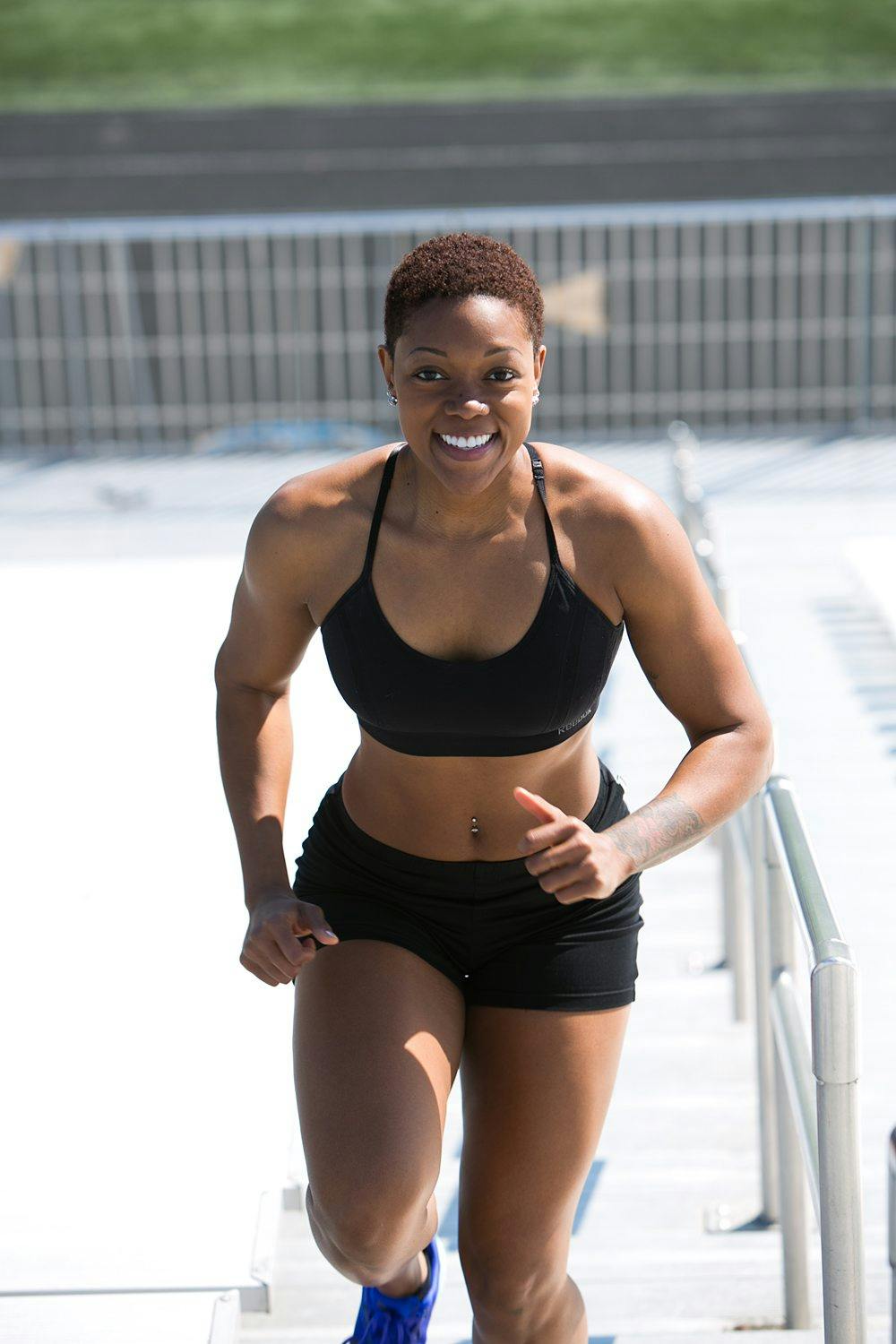
Your head position might seem minor, but it significantly impacts the alignment of your entire body. The key is to keep your head up, looking forward towards the horizon, not down at your feet. Imagine you're spotting something interesting in the distance. Avoid tilting your chin up too high or tucking it down towards your chest. A neutral head position allows your neck to be relaxed and prevents unnecessary tension in your shoulders and upper back. Think "eyes forward, chin level" as your mantra for head position.
Back and Shoulders: Relax and Release Tension

Maintain a straight but not stiff back. Avoid slouching or hunching forward, as this compresses your lungs and restricts breathing. Your shoulders should be relaxed and loose, not tense and shrugged up towards your ears. Imagine your shoulders are hanging naturally. Tension in your shoulders wastes energy and can contribute to upper back and neck pain. Periodically check in with your shoulders during your run – consciously relax them and let any tension melt away. Think "tall back, relaxed shoulders" to promote efficient upper body posture.
Core Engagement: Your Center of Power

Your core muscles – the muscles in your abdomen, back, and pelvis – are the powerhouse of your running form. Engaging your core provides stability and balance, allowing you to maintain good posture and generate power efficiently. Think of gently drawing your navel towards your spine, activating your abdominal muscles. It shouldn't be a hard clench, but a subtle engagement. A strong core helps prevent excessive rotation in your torso and hips, leading to a more stable and efficient stride. Regular core strengthening exercises, like planks and bridges, are essential for maintaining good running posture and preventing injuries. Think "engage your core, run with power" to remind yourself of this crucial element.
2. Arm Movement: Drive and Balance
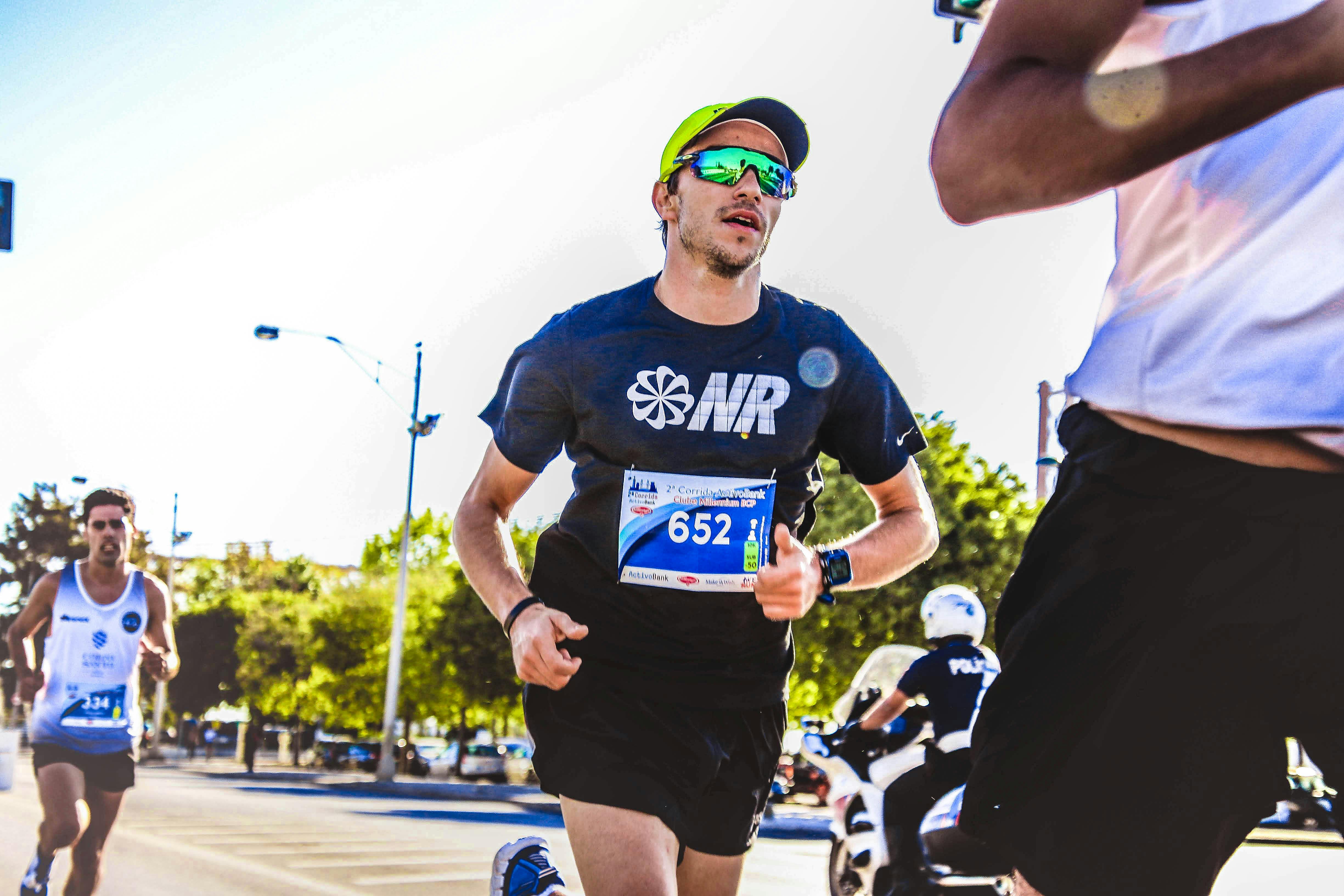
Your arms aren't just along for the ride – they play a vital role in your running form. Proper arm movement contributes to balance, rhythm, and forward propulsion. Think of your arms as counterweights and driving forces that complement your leg stride. Let's look at the key aspects of arm movement:
Arm Swing: Forward and Back, Not Across
The ideal arm swing is forward and back, in line with your direction of motion, not across your body. Imagine your arms swinging on a parallel track. Keep your elbows bent at approximately 90 degrees. Your hands should swing from about your waist level to chest height. Avoid crossing your arms excessively in front of your body, as this wastes energy and can cause unnecessary rotation in your torso. A smooth, controlled arm swing helps maintain balance and rhythm, and it can even contribute to your forward momentum, especially on uphills. Think "forward and back, like pistons" to visualize the ideal arm swing.
Hand Position: Relaxed and Light

Tension in your hands can radiate up your arms and into your shoulders, creating unnecessary tightness. Keep your hands relaxed and light, as if you're holding a delicate butterfly in each palm. You can lightly cup your hands or keep them in a loose fist. Avoid clenching your fists tightly, as this creates tension. Relaxed hands promote relaxed arms and shoulders, contributing to overall efficient movement. Think "light hands, relaxed arms" to maintain fluidity in your upper body.
3. Footstrike: Landing Lightly and Efficiently
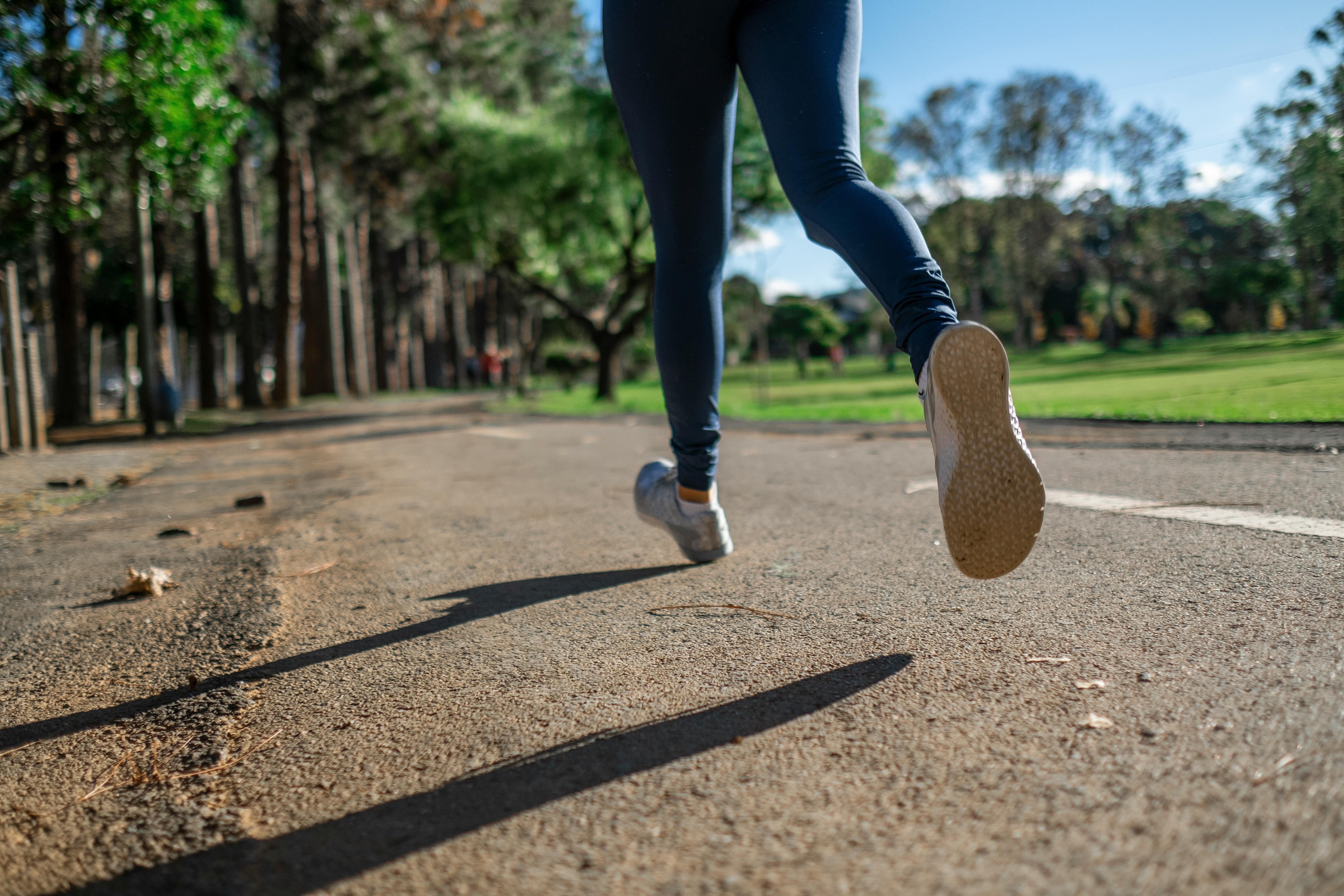
Footstrike – how your foot contacts the ground – is a highly debated aspect of running form. While there's no single "perfect" footstrike for everyone, understanding the principles of efficient landing can help you minimize impact and improve your running economy. The main debate revolves around heel strike versus midfoot strike:
Midfoot vs. Heel Strike: The Impact Debate
Heel striking, where your heel hits the ground first, is common, especially among newer runners. However, it can generate a significant impact force that travels up your legs, potentially increasing the risk of injuries. It can also act like a brake, slowing you down slightly with each stride. Midfoot striking, where you land on the middle portion of your foot, is often considered more efficient and less impactful. It allows for better shock absorption through your foot and ankle, reducing stress on your knees and hips. Transitioning to a midfoot strike is a gradual process and may not be suitable for everyone, especially those with pre-existing conditions. If you're currently a heel striker, focus on landing lighter and trying to bring your foot contact point slightly forward, closer to your midfoot. Listen to your body and make changes gradually. Think "land lightly, absorb impact" to focus on a gentler footstrike.
Cadence: Steps Per Minute for Efficiency
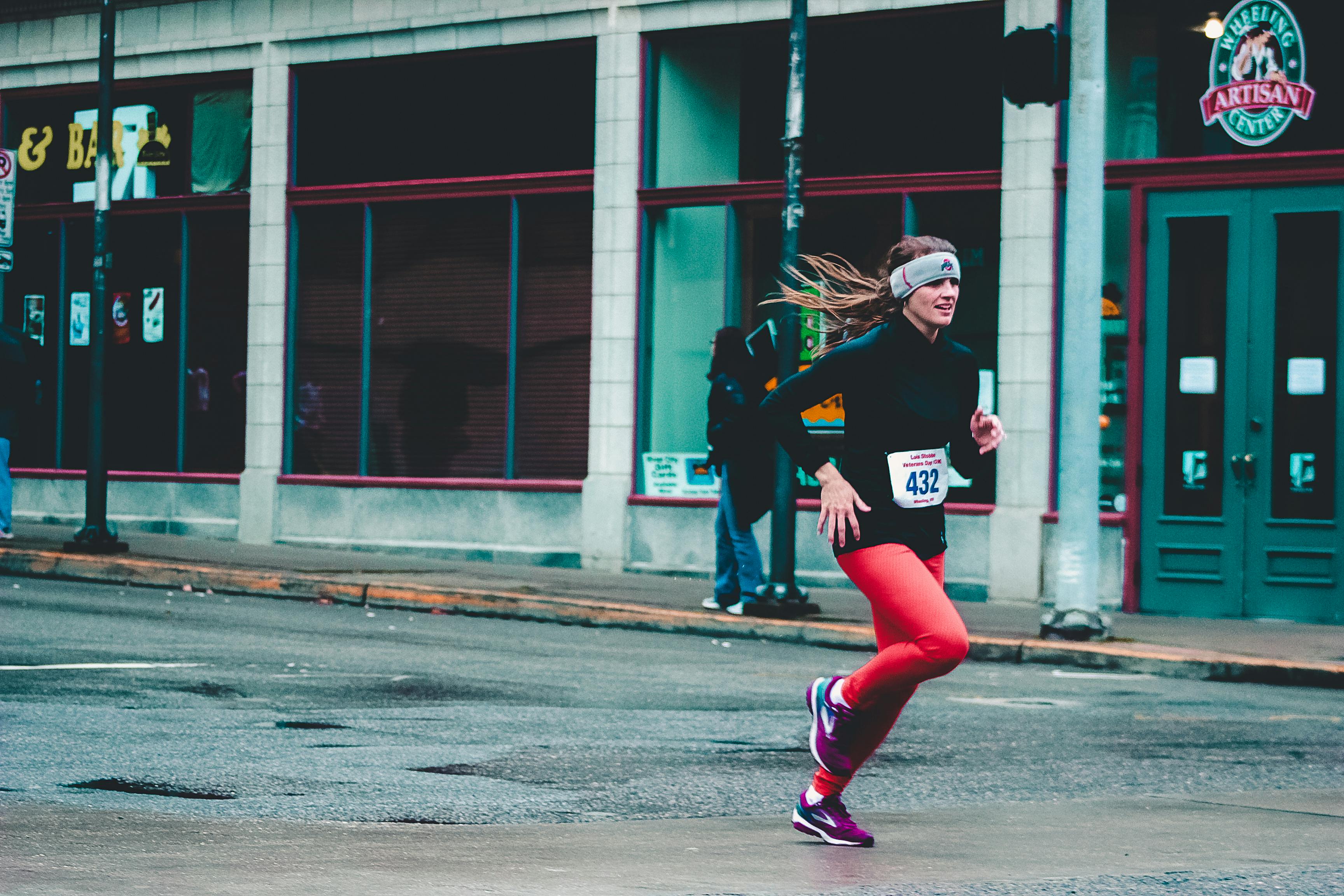
Cadence, or step rate, is the number of steps you take per minute. A higher cadence is generally associated with more efficient running and reduced impact forces. Many experts recommend aiming for a cadence of around 170-180 steps per minute, but this is just a guideline, and individual optimal cadence can vary. A higher cadence often encourages a shorter stride and a lighter footstrike, both beneficial for injury prevention and efficiency. If you tend to have a low cadence (e.g., below 160), try consciously increasing your step rate. You can use a metronome or music with a beat around 170-180 bpm to help you find the rhythm. Focus on quicker, lighter steps rather than trying to lengthen your stride. Think "quicker steps, lighter impact" to improve your cadence and efficiency.
4. Stride Length: Natural and Efficient

Stride length is the distance you cover with each step. Finding the optimal stride length is crucial for both efficiency and injury prevention. The common mistake is overstriding:
Overstriding: Reaching Too Far Ahead

Overstriding occurs when you reach too far forward with your leg, landing with your foot out in front of your center of gravity. This often leads to heel striking and increased impact forces. Overstriding also acts like a brake, slowing you down and wasting energy. It puts extra stress on your hamstrings, knees, and shins, increasing the risk of injuries. Avoid consciously trying to lengthen your stride by reaching forward. Instead, focus on pushing off powerfully with your back leg and allowing your legs to turn over naturally beneath you. Think "shorten your stride, land under your body" to avoid overstriding.
Optimal Stride: Natural and Comfortable
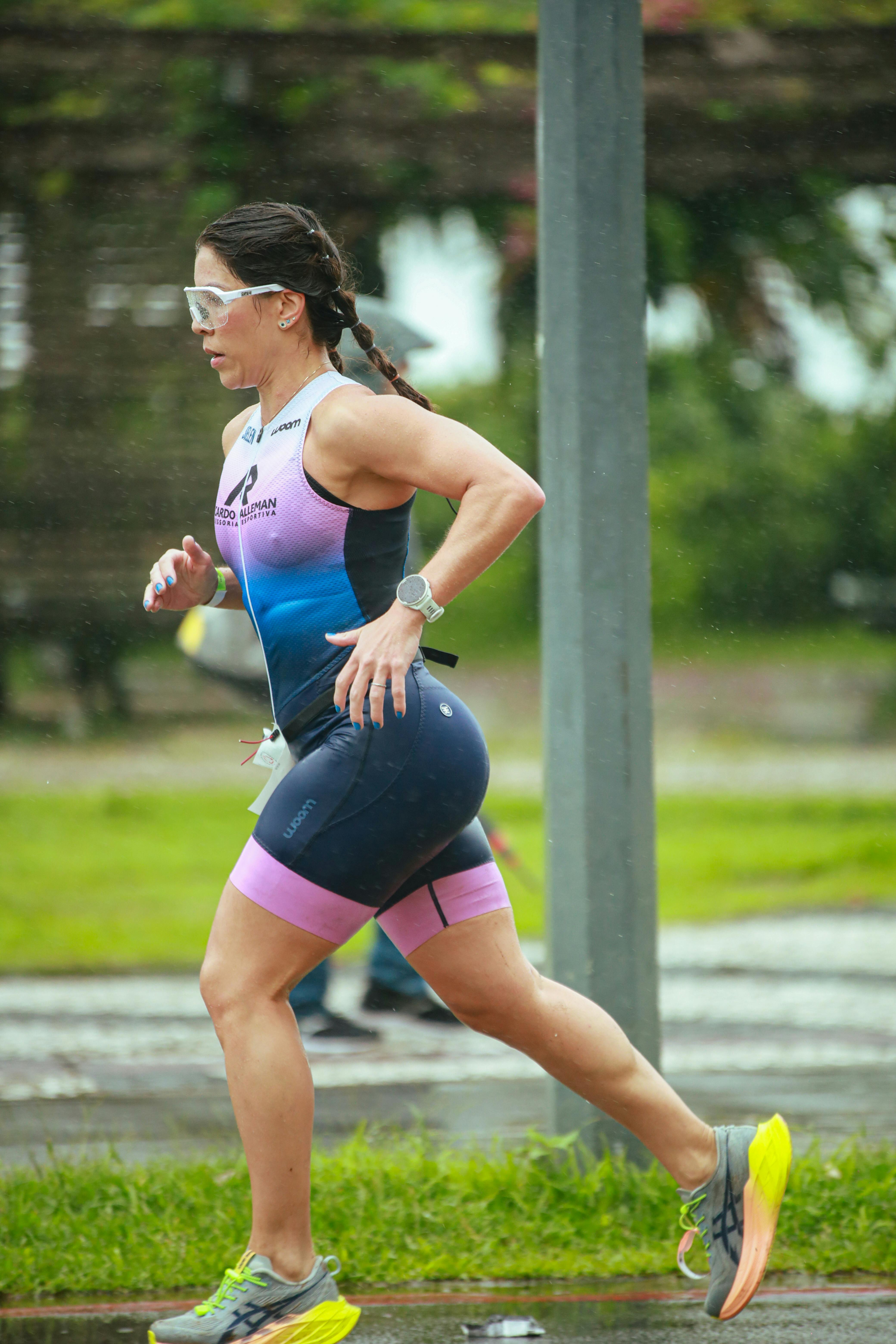
Your optimal stride length is the stride that feels most natural and comfortable for you, allowing you to run efficiently without overexerting yourself. It's not about forcing a longer or shorter stride, but about finding a rhythm and length that allows for a smooth, fluid motion. Focus on running with a higher cadence and landing midfoot, and your stride length will naturally adjust to a more efficient range. Avoid consciously trying to manipulate your stride length excessively. Instead, focus on the other elements of good form – posture, arm swing, footstrike, and cadence – and your stride will become more natural and efficient as a result. Think "natural stride, efficient movement" to find your optimal stride length.
Simple Tweaks for Improved Running Form
Improving your running form doesn't require a complete overhaul or hours of complicated drills. Often, small, consistent tweaks can make a big difference over time. Here are some simple, actionable strategies you can incorporate into your running routine to gradually refine your form and reap the benefits of more efficient and injury-resistant running.
1. Cadence Adjustment: Find Your Rhythm

Increasing your cadence is one of the most impactful tweaks you can make to your running form. If you suspect your cadence is low (below 160 steps per minute), try these techniques to gradually increase it:
- Use a Metronome: Run with a metronome app set to 170-180 bpm and try to match your steps to the beat. Start with short intervals (e.g., 5 minutes) and gradually increase the duration as you get comfortable.
- Music with a Beat: Create a running playlist with songs that have a tempo of around 170-180 bpm. Focus on matching your steps to the rhythm of the music.
- Focus on Quick Steps: Consciously think about taking quicker, lighter steps during your runs. Imagine you're running on hot coals and need to minimize ground contact time.
- Gradual Increase: Don't try to jump to a high cadence overnight. Increase your cadence by 5-10 steps per minute each week until you reach your target range.
- Short, Frequent Checks: Periodically check your cadence during your runs. Use a running watch or app that tracks cadence, or simply count your steps for 15 seconds and multiply by four.
Remember, the goal is to find a cadence that feels natural and sustainable for you. Don't force it if it feels uncomfortable or strained. Gradual and consistent practice is key.
2. Strengthening Core Muscles: Build Stability
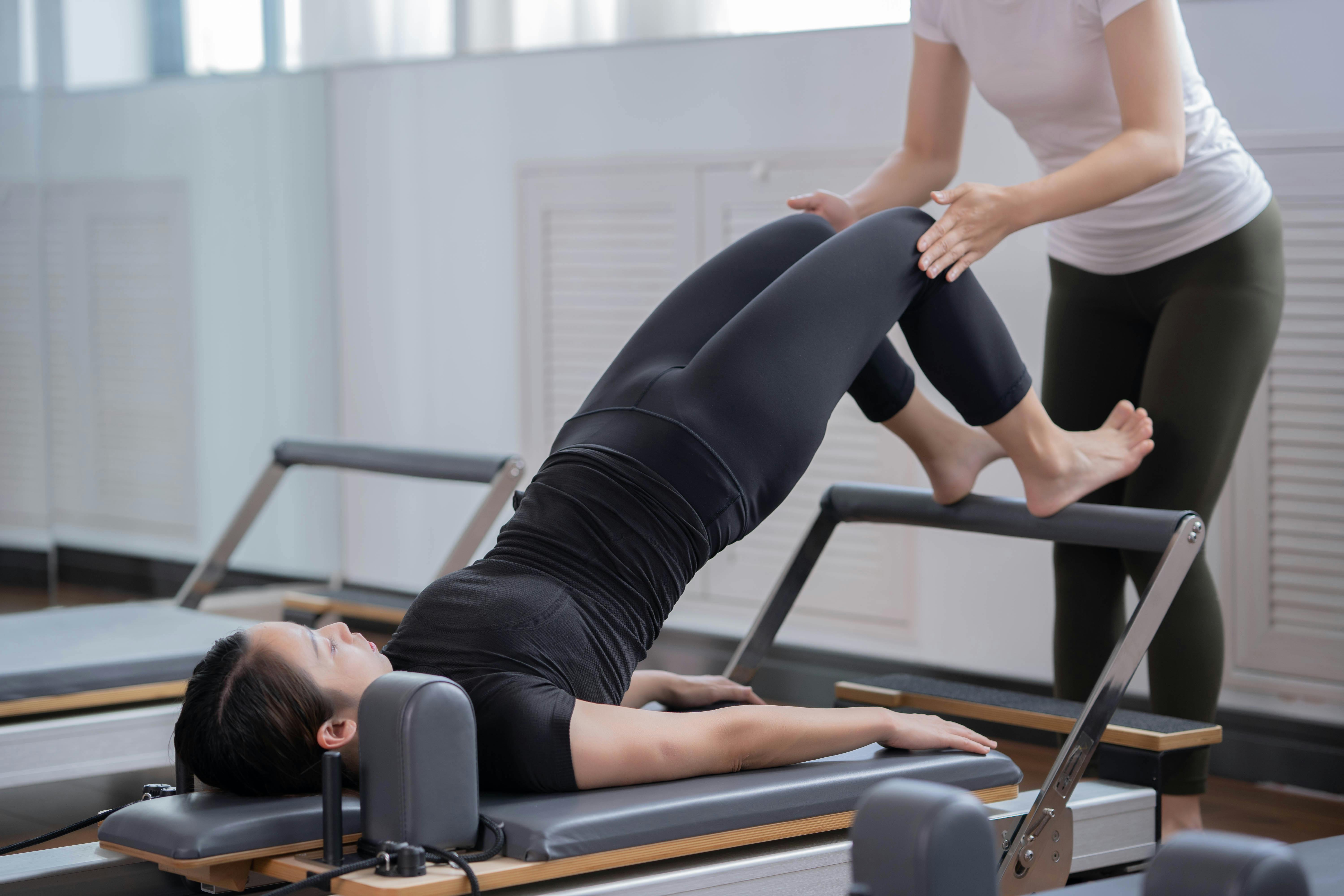
A strong core is essential for maintaining good posture and stability while running. Incorporate these core strengthening exercises into your routine 2-3 times per week:
- Planks: Hold a plank position (forearms or hands on the ground, body in a straight line from head to heels) for 30-60 seconds, repeating 2-3 times. Focus on engaging your core and maintaining proper form.
- Bridges: Lie on your back with knees bent and feet flat on the ground. Lift your hips off the ground, squeezing your glutes and core. Hold for a few seconds and repeat 10-15 times for 2-3 sets.
- Crunches and Leg Raises: Perform controlled crunches and leg raises to strengthen your abdominal muscles. Focus on proper form rather than speed.
- Russian Twists: Sit with knees bent and feet slightly off the ground. Lean back slightly and twist your torso from side to side, engaging your obliques. You can add weight for a greater challenge.
- Bird Dogs: Start on your hands and knees. Extend one arm straight forward and the opposite leg straight back, maintaining a straight line from head to heel. Alternate sides and repeat 10-15 times per side for 2-3 sets.
Consistency is key with core training. Even 10-15 minutes of core work a few times a week can make a noticeable difference in your running form and stability.
3. Flexibility and Mobility: Unlock Range of Motion

Good flexibility and mobility, especially in your hips and ankles, are crucial for efficient running form and injury prevention. Incorporate these stretches and mobility exercises into your routine:
- Hip Flexor Stretch: Kneel on one knee with the other foot forward. Gently push your hips forward until you feel a stretch in the front of your hip. Hold for 30 seconds and repeat on the other side.
- Hamstring Stretch: Place one heel on a slightly elevated surface, keeping your leg straight. Lean forward from your hips until you feel a stretch in the back of your thigh. Hold for 30 seconds and repeat on the other side.
- Calf Stretch: Stand with one foot slightly behind the other. Bend your front knee, keeping your back heel on the ground, until you feel a stretch in your calf. Hold for 30 seconds and repeat on the other side.
- Ankle Circles and Dorsiflexion: Rotate your ankles in both directions and practice flexing your foot upwards (dorsiflexion) to improve ankle mobility.
- Dynamic Warm-up: Before each run, perform dynamic stretches like leg swings, arm circles, and torso twists to prepare your muscles and joints for running.
Regular stretching and mobility work will improve your range of motion, allowing for a more fluid and efficient stride, and reducing the risk of muscle imbalances and injuries.
4. Mindfulness and Form Drills: Run with Intention

Being mindful of your form during your runs and incorporating specific form drills can help you develop better running habits. Try these strategies:
- Body Scan During Runs: Periodically check in with your body during your runs. Are your shoulders relaxed? Is your posture upright? Are your hands loose? Make conscious adjustments as needed.
- Mirror Running: Run in front of a mirror (e.g., a store window) for short intervals to get visual feedback on your posture, arm swing, and overall form.
- High Knees and Butt Kicks: Incorporate short intervals of high knees (bringing your knees high towards your chest) and butt kicks (kicking your heels towards your glutes) into your warm-up to improve leg turnover and coordination.
- Strides: Include strides (short bursts of fast running with good form) at the end of some easy runs to practice running with a higher cadence and efficient mechanics.
- Hill Repeats: Running hills can naturally encourage better posture and a more powerful push-off. Focus on maintaining good form and a strong core when running uphill.
Consciously focusing on your form during your runs and practicing form drills will help ingrain better running habits and make efficient movement more automatic over time.
Common Running Form Mistakes and How to Fix Them
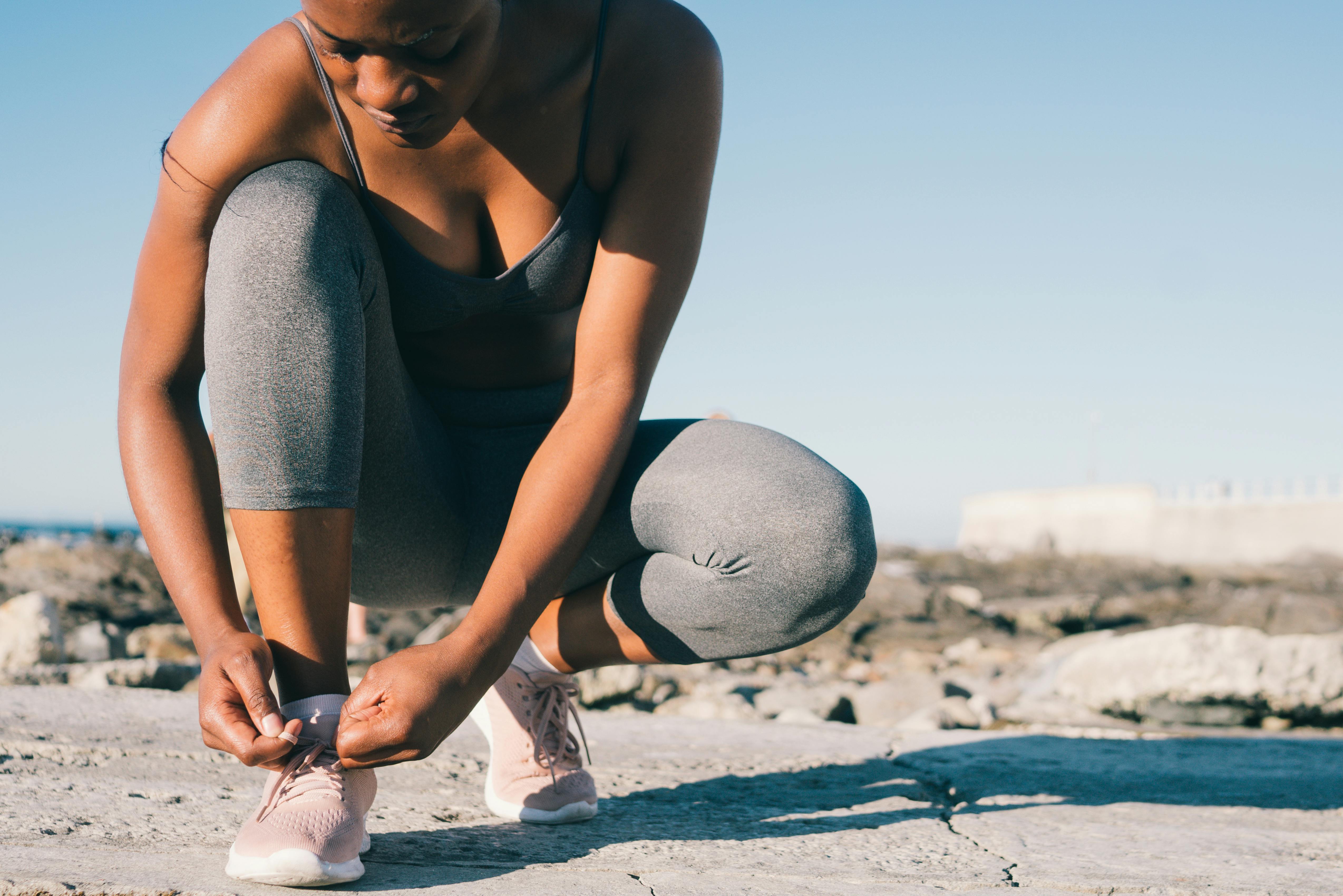
Identifying and correcting common running form mistakes is a crucial step towards improving your efficiency and preventing injuries. Let's delve into some of the most prevalent errors runners make and explore practical solutions to fix them.
Heel Striking: Soften Your Landing
The Mistake: Landing heavily on your heel with your leg extended far in front of your body. This creates a jarring impact and acts as a brake.
How to Fix It:
- Increase Cadence: A higher cadence naturally encourages a lighter, more midfoot landing. Focus on taking quicker steps.
- Shorten Stride: Avoid reaching too far forward with your leg. Aim to land with your foot closer to your center of gravity.
- Run on Softer Surfaces: Running on trails or grass can provide more cushioning and encourage a softer landing.
- Footstrike Drills: Practice landing midfoot in short, barefoot strides on a soft surface like grass.
- Listen to Your Footfall: Try to run quieter. A loud, heavy footfall often indicates heel striking. Aim for a softer, quieter landing.
Transitioning away from heel striking is a gradual process. Be patient and focus on making small, consistent changes over time.
Crossing Arms Over the Body: Swing Straight Ahead

The Mistake: Swinging your arms excessively across your body's midline. This wastes energy and causes unnecessary torso rotation.
How to Fix It:
- Visualize Parallel Tracks: Imagine your arms swinging on parallel tracks, forward and back, not across your body.
- Elbow Drive: Focus on driving your elbows straight back, rather than swinging your hands across your chest.
- Mirror Practice: Run in front of a mirror to get visual feedback on your arm swing.
- Conscious Correction: During your runs, periodically check your arm swing and consciously correct it if you notice your arms crossing over.
- Core Engagement: A stronger core helps stabilize your torso and reduces excessive rotation caused by arm swing.
A more efficient arm swing conserves energy and promotes a smoother, more balanced running motion.
Leaning Too Far Forward (or Backward): Find Your Center

The Mistake: Leaning excessively forward from the waist or leaning backward. Both disrupt your balance and efficiency.
How to Fix It:
- Upright Posture Cue: Imagine a string pulling you up from the crown of your head, promoting a tall, upright posture.
- Slight Lean from Ankles: A slight forward lean should originate from your ankles, not your waist. Your body should be in a relatively straight line from head to hips.
- Core Engagement: A strong core helps maintain proper posture and prevents excessive leaning.
- Hill Running Practice: Running hills can help you find a natural forward lean that originates from your ankles.
- Check Your Reflection: Briefly check your posture in a reflection (e.g., store window) during your run.
Proper posture is about finding balance and alignment, allowing gravity to assist your forward motion rather than hinder it.
The Role of Footwear in Running Form

Your running shoes are your most direct point of contact with the ground, and they can significantly influence your running form. While shoes can't magically fix poor form, choosing the right footwear can support and complement your natural running mechanics. Here's a brief overview of how footwear plays a role in running form:
Shoe Type and Footstrike
The type of running shoe you choose can subtly influence your footstrike. Highly cushioned shoes with a large heel drop (the difference in height between the heel and forefoot) may encourage heel striking, as the elevated heel provides more cushioning for heel impact. Conversely, shoes with a lower heel drop or minimalist shoes may promote a more midfoot or forefoot strike, as they offer less cushioning in the heel and encourage a more natural foot motion.
However, it's crucial to remember that shoes are not the primary determinant of footstrike. Your running form is largely dictated by your body mechanics and movement patterns. Shoes can either support or hinder your natural form, but they won't fundamentally change it.
Choosing Shoes That Support Your Form
When selecting running shoes, consider these factors to support good running form:
- Comfort: The most important factor is comfort. Choose shoes that feel comfortable on your feet from the moment you put them on.
- Proper Fit: Ensure your shoes fit properly in length and width. You should have about a thumb's width of space between your longest toe and the end of the shoe.
- Consider Heel Drop: If you're aiming for a midfoot strike, you might consider shoes with a lower heel drop (e.g., 4-8mm). If you're a heel striker and prefer more heel cushioning, shoes with a higher heel drop (e.g., 10-12mm) might be more suitable.
- Stability vs. Neutral: Choose shoes based on your foot type and pronation. If you have neutral pronation, neutral shoes are generally recommended. If you overpronate, stability shoes may offer more support. Consult with a running shoe specialist for personalized advice.
- Weight: Lighter shoes can feel more responsive and encourage a quicker stride. However, prioritize comfort and support over weight, especially for longer runs.
Visit a specialty running store to get fitted for shoes and receive expert advice. Try on different models and run a short distance in them to assess comfort and feel before making a purchase.
Barefoot Running and Minimalist Shoes
Some runners explore barefoot running or minimalist shoes to encourage a more natural running form and strengthen foot muscles. However, transitioning to barefoot or minimalist running should be done very gradually to avoid injury. It's best to consult with a running coach or physical therapist before making significant changes to your footwear or running style, especially if you have any pre-existing conditions.
Listening to Your Body

While understanding the principles of good running form is essential, it's equally crucial to listen to your body and adjust your technique based on its feedback. Running form isn't a rigid set of rules, but rather a dynamic process of finding what works best for *your* individual body and needs. Here's why listening to your body is paramount:
Individual Variation

Every runner is unique. Factors like body type, biomechanics, running history, and any pre-existing conditions influence what constitutes optimal running form for each individual. What works perfectly for one runner might not be ideal for another. There's no one-size-fits-all "perfect" running form. The key is to understand the general principles of efficient movement and then personalize them to fit your body's specific needs and preferences.
Pain vs. Discomfort
It's important to distinguish between normal running discomfort and pain that signals a potential problem. Muscle soreness, fatigue, and the burning sensation during intense efforts are normal parts of training. However, sharp, localized pain, pain that worsens during running, or pain that persists after running should not be ignored. If you experience pain, stop running, rest, and assess the situation. Don't push through pain in the hope that it will go away. Ignoring pain can lead to more serious injuries.
Adjusting Form Based on Feedback
Pay attention to how your body feels during and after your runs. If you consistently experience pain in a particular area, it could be a sign of a form issue. Experiment with small adjustments to your technique – for example, try increasing your cadence, shortening your stride, or relaxing your shoulders. See if these tweaks alleviate the pain. If the pain persists or worsens, consult with a running coach, physical therapist, or sports medicine professional to get personalized guidance and address any underlying issues.
Rest and Recovery

Rest and recovery are integral parts of injury prevention and good running form. Adequate rest allows your body to repair and rebuild muscle tissue, reducing the risk of overuse injuries. Proper recovery practices, such as stretching, foam rolling, and getting enough sleep, help maintain muscle flexibility and mobility, which are essential for efficient running form. Don't underestimate the importance of rest days and listen to your body's signals of fatigue. Overtraining can lead to poor form, increased injury risk, and burnout.
Conclusion

Refining your running form is a journey, not a destination. It's an ongoing process of learning, experimenting, and adapting to your body's needs. By understanding the fundamental principles of good running form – posture, arm movement, footstrike, and stride length – and incorporating simple tweaks into your routine, you can unlock significant benefits: increased efficiency, injury prevention, improved endurance, and better overall performance. Remember that small, consistent changes are more effective than drastic overhauls. Focus on making gradual adjustments and be patient with yourself as you develop new running habits.
Listen to your body, pay attention to its feedback, and don't be afraid to experiment to find what works best for you. Consider working with a running coach or physical therapist for personalized guidance and form analysis, especially if you're experiencing persistent pain or injuries. Running should be an enjoyable and sustainable activity for life. By prioritizing good form, you're investing in your long-term running health and enjoyment. So, lace up your shoes, head out for a run, and start applying these simple tweaks. You'll be amazed at how even small changes can make a big difference in how you feel and perform as a runner. Run strong, run efficiently, and most importantly, run well!
Ready to Run Better? Take Action!

Now that you're armed with the knowledge of running form fundamentals, it's time to put it into practice! Here are a few action steps to help you get started and continue your journey towards more efficient and injury-free running:
- Download the Running Form Checklist: Use our handy checklist (available for download in the sidebar) to assess your current running form and identify areas for improvement.
- Incorporate Form Drills: Add 5-10 minutes of form drills (like high knees and butt kicks) to your warm-up routine 2-3 times per week.
- Focus on One Tweak at a Time: Don't try to change everything at once. Choose one aspect of your form (e.g., cadence, posture) to focus on each week.
- Seek Feedback: Ask a running friend, coach, or experienced runner to observe your form and provide feedback. Consider filming yourself running and analyzing the video.
- Listen to Your Body: Pay attention to how your body feels and adjust your form and training accordingly. Don't ignore pain.
- Share This Guide: Know a fellow runner who could benefit from improving their form? Share this guide with them!
- Join Our Community: Connect with other runners in our online community to share your progress, ask questions, and stay motivated. Follow us on social media for daily tips and inspiration!
Remember, improving your running form is a marathon, not a sprint. Be patient, consistent, and celebrate your progress along the way. We're here to support you every step of the way. Happy running!
